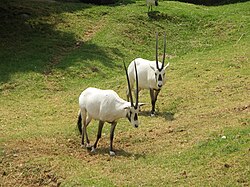
The San Diego Zoo Safari Park is a zoo and safari park in San Diego, California, located in San Pasqual Valley. The park houses over 3,000 animals representing more than 300 species. It houses a large array of wild and endangered animals from every continent except Antarctica. The park also includes a botanical garden with over one million plants. In 2022, the park attracted over 1.6 million visitors.
London Zoo, previously known as ZSL London Zoo or London Zoological Gardens and sometimes called Regent's Park Zoo, is the world's oldest scientific zoo. It was opened in London on 27 April 1828, and was originally intended to be used as a collection for scientific study. In 1831 or 1832, the animals of the Tower of London menagerie were transferred to the zoo's collection. It was opened to the public in 1847. As of December 2022, it houses a collection of 14,926 individuals, making it one of the largest collections in the United Kingdom.
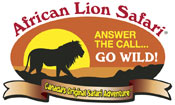
African Lion Safari is a family-owned safari park in Southern Ontario, Canada, located between the cities of Hamilton and Cambridge, located 100 kilometres (62 mi) west of Toronto. Guests may tour seven game reserves, with a total area of about 740 acres, on tour buses or in visitors' own vehicles, where animals roam freely in contained areas. Accompanying the game reserves is a walking section where exotic birds and primates, as well as the park's herd of Asian elephants, are on display.
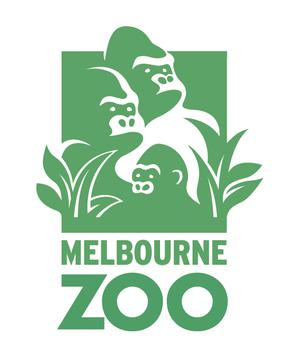
Melbourne Zoo is a zoo in Melbourne, Australia. It is located within Royal Park in Parkville, approximately 4 kilometres (2.5 mi) north of the centre of Melbourne. It is the primary zoo serving Melbourne. As of 2021, the zoo contains 3742 animals comprising 243 species, from Australia and around the world. The zoo is accessible via Royal Park station on the Upfield railway line, and is also accessible via tram routes 58 and 19, as well as by bicycle on the Capital City Trail. Bicycles are not allowed inside the zoo itself.

The Los Angeles Zoo and Botanical Gardens is a 133-acre (54 ha) zoo founded in 1966 and located in Los Angeles, California, United States. The city of Los Angeles owns the zoo, its land and facilities, and the animals.

The Wilder Institute/Calgary Zoo is located in Bridgeland, Calgary, Alberta, Canada, just east of the city's downtown and adjacent to the Inglewood and East Village neighborhoods. It is accessible via Calgary's C-Train light rail system, by car via Memorial Drive, and by bicycle and footpath via the Bow River pathway. A large portion of the zoo is located on St. George's Island in the Bow River.

Colchester Zoo is a zoological garden situated near Colchester, England. The zoo opened in 1963 and celebrated its 60th anniversary on 2 June 2023. The zoo is home to many rare and endangered species, including big cats, primates and birds as well as many invertebrates and fish species.
Saxonwold is an affluent suburb of Johannesburg, South Africa. It is situated in what was once the Sachsenwald Forest in the early 20th century. It is located in Region E of the City of Johannesburg Metropolitan Municipality.

Ragunan Zoological Park, formerly and still commonly known as Ragunan Zoo, is a zoo located in the eponymous kelurahan (subdistrict) in Pasar Minggu, South Jakarta, Jakarta, Indonesia. The zoo has an area of 140-hectare (350-acre) and the largest park in Jakarta. The zoo has an aviary and a primate centre, and employs over 450 people. Many of the animals in the zoo are endangered and threatened from all parts of Indonesia and the rest of the world. There are a total of 2,288 animals inside the zoo. Laid out in a lush tropical habitat, rare animals such as crocodile, chimpanzee, gorilla, orangutan, tapir, anoa, sumatran tiger, babirusa, and peacocks are given ample room. The zoo is located in South Jakarta and is easily accessible through the Jakarta Outer Ring Road and TransJakarta Corridor 6 bus.
Max was a western lowland gorilla held at the Johannesburg Zoo who in 1997 was shot and wounded by Isaac Mofokeng, a criminal who entered his enclosure at the zoo while attempting to evade police.
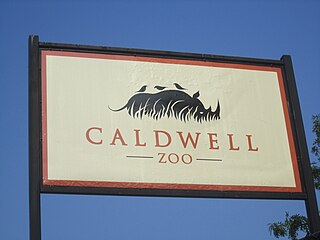
The Caldwell Zoo is an 85-acre (34 ha) zoo located in the city of Tyler, Texas. It features animals from all over the world.
Forest Town, as the name implies, is a leafy suburb of Johannesburg, South Africa. It lies between the busy thoroughfares of Jan Smuts Avenue and Oxford Road, and is bordered to one side by the Johannesburg Zoo.
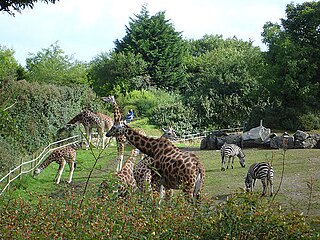
Belfast Zoological Gardens is a zoo in Belfast, Northern Ireland. It is in a relatively secluded location on the northeastern slope of Cavehill, overlooking Belfast's Antrim Road. Opened in 1934, it is the second-oldest zoo in Ireland, after Dublin Zoo, which opened in 1831.
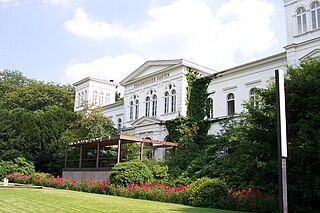
Wuppertal Zoo is a 24-hectare (59-acre) zoo in Wuppertal, Germany. About 5,000 animals from around the world live at the zoo, representing about 500 species, including apes, monkeys, bears, big cats, elephants, as well as birds, reptiles, and fish.

The Warsaw Zoological Garden, known simply as the Warsaw Zoo, is a scientific zoo located alongside the Vistula River in Warsaw, Poland. Opened in 1928, the zoo covers about 40 hectares in central Warsaw, and sees over 700,000 visitors annually, making it one of the most popular zoos in Poland. It is home to over 11,000 animals representing more than 500 species.

The ZooParc de Beauval, more commonly called Beauval Zoo or, more simply, Beauval, is a French zoological park located in Saint-Aignan-sur-Cher, Centre-Val de Loire. It features more than 35,000 animals on 40 hectares, which is one of the largest animal collections in France and in Europe. Created in 1980 by Françoise Delord, it is now run by her son, Rodolphe Delord, and managed by his family, which owns most of the capital.

Givskud Zoo is a zoo and safari park in Givskud, 20 kilometres (12 mi) north west of Vejle in Denmark. The park opened in 1969 under the name of "Løveparken" with lions as the only animals. In 1970 Asian elephants arrived and today the park has more than 700 animals representing more than 70 species. The zoo is one of only ten attractions to be awarded 5 stars by the Danish tourist guide Jyllands Attraktioner and receives about 325,000 visitors a year. It covers a total of 120 hectares, including 65 hectares currently in use for the zoo and safaripark. It was announced in 2014 that the remaining area will become part of a future zoo, with first phase opening for the zoo's 50th anniversary in 2019, under the name Zootopia.

Africa Alive! Zoological Reserve, formerly known as Africa Alive! and Suffolk Wildlife Park, is a zoo located in Kessingland, Suffolk, UK. It is situated off the A12 at Kessingland 2 miles (3 km) south of Lowestoft.
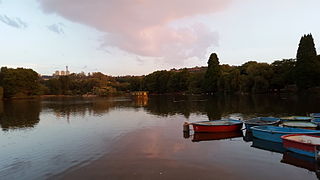
Zoo Lake is a popular lake and public park in Johannesburg, South Africa. It is part of the Hermann Eckstein Park and is opposite the Johannesburg Zoo. The Zoo Lake consists of two dams, an upper feeder dam, and a larger lower dam, both constructed in natural marshland watered by the Parktown Spruit.
Jan Smuts Avenue is a major street in Johannesburg, South Africa. It begins in Randburg, and passes through important business areas like Rosebank. It passes the Johannesburg Zoo, Zoo Lake and Wits University before becoming Bertha Street, and the Nelson Mandela Bridge near the Johannesburg CBD. It has been described as "the most important road for a tourist" in Johannesburg. It forms part of Johannesburg's M27 route.

